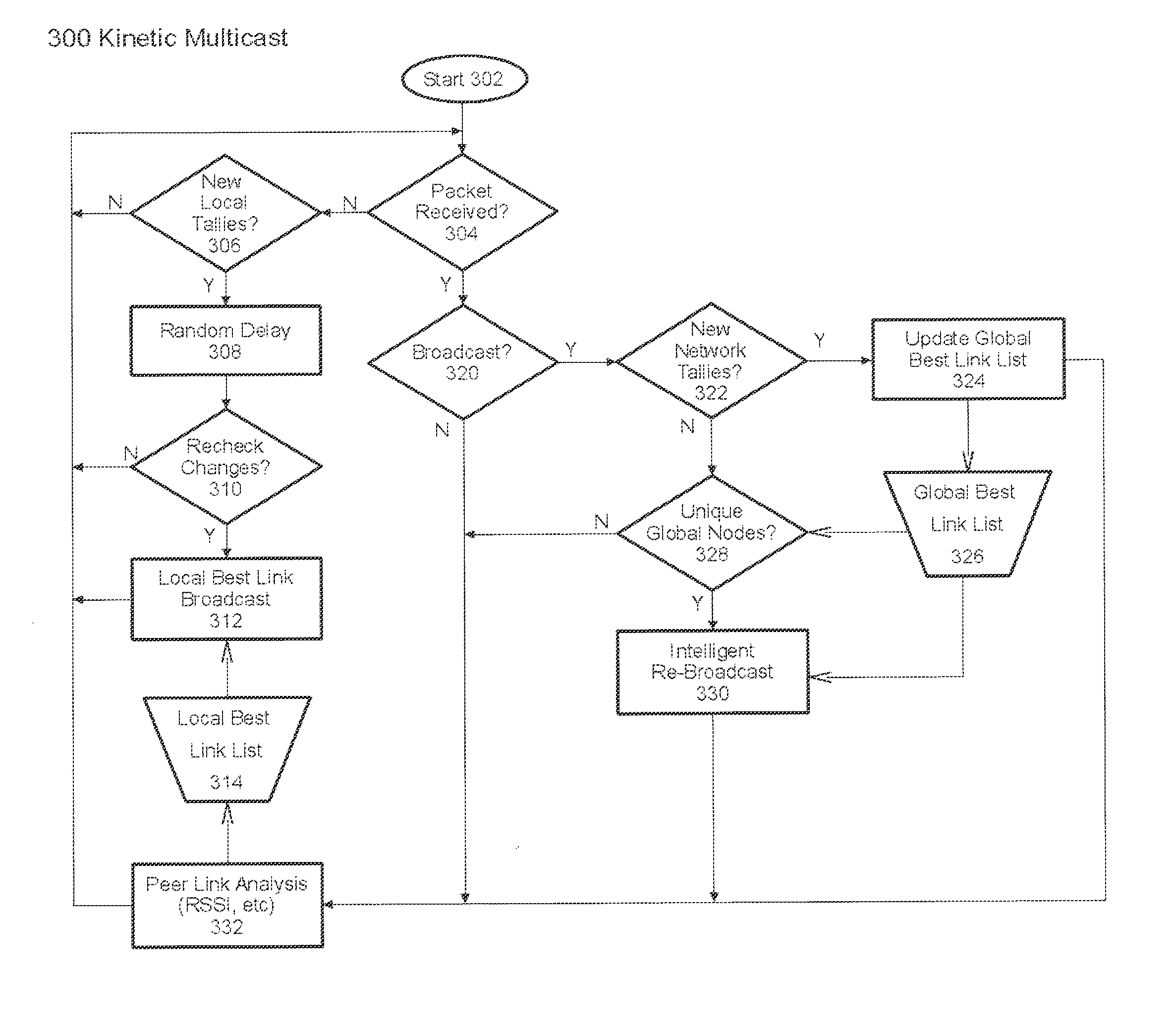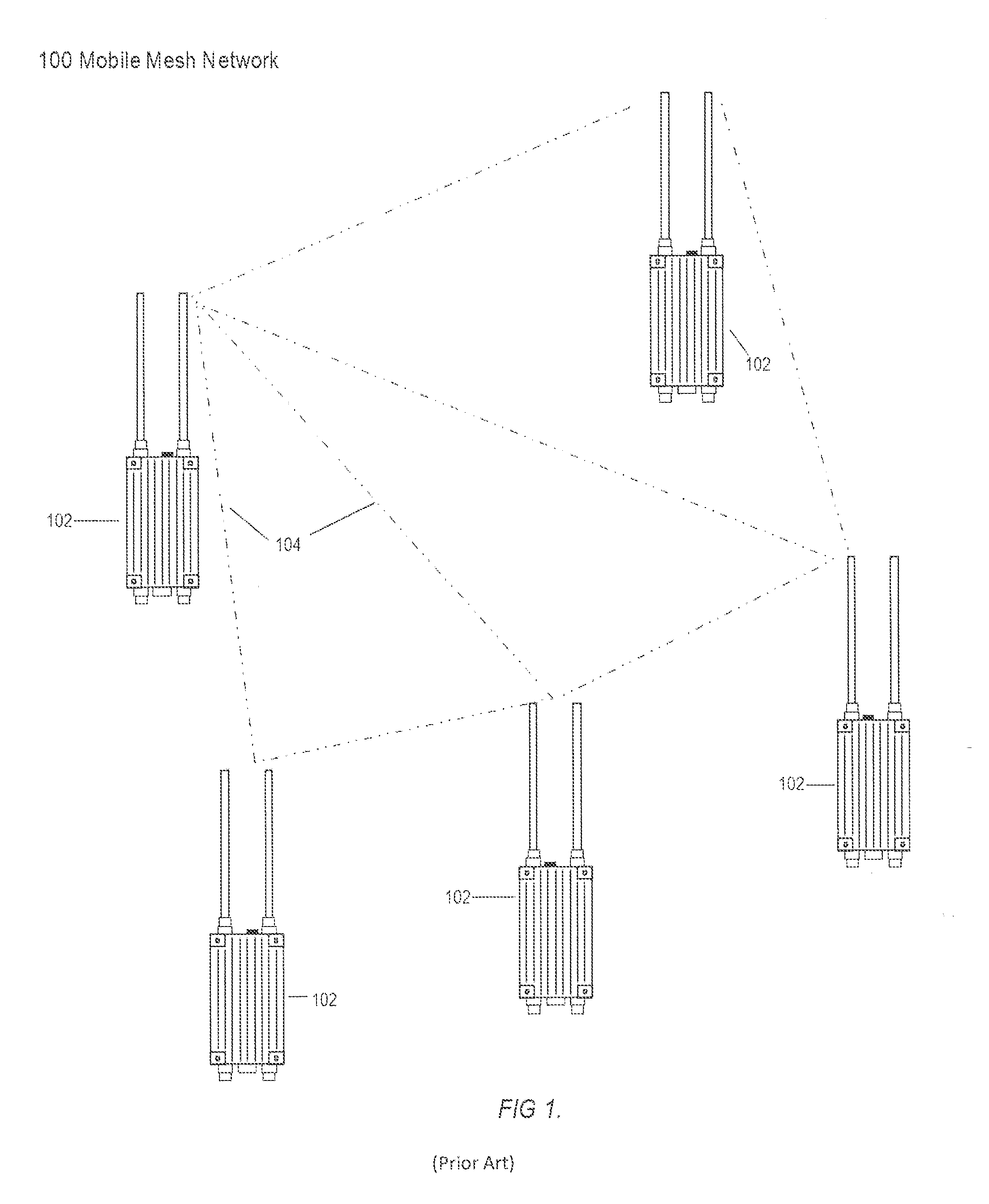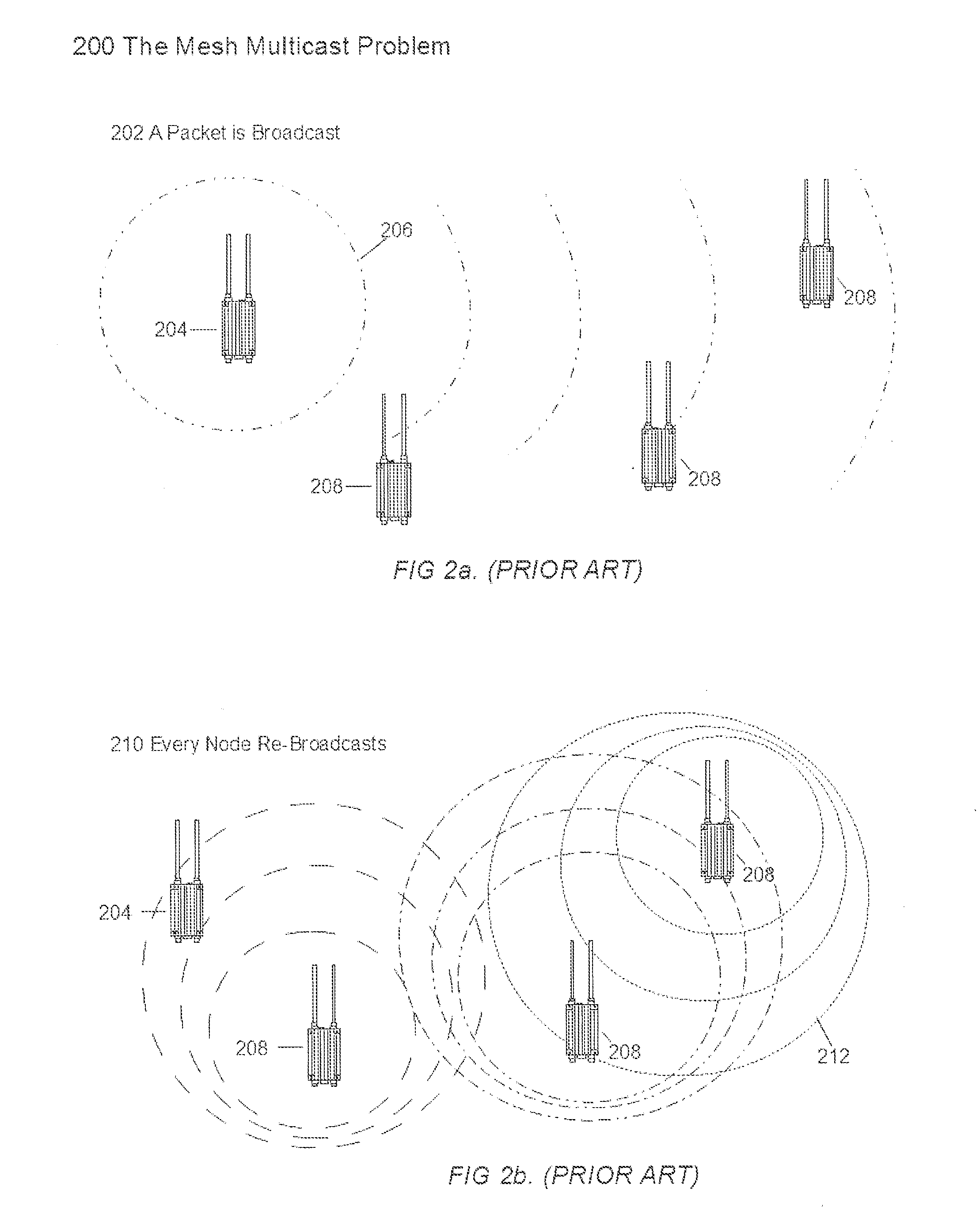System and method for multicast over highly mobile mesh networks
a mesh network and multicast technology, applied in the field of tactical and other highly mobile communications networks, can solve the problems of network failure, low performance, and large amount of redundant networks, and achieve the effect of reducing congestion and associated network failur
- Summary
- Abstract
- Description
- Claims
- Application Information
AI Technical Summary
Benefits of technology
Problems solved by technology
Method used
Image
Examples
Embodiment Construction
[0021]A preferred embodiment of the present invention will be set forth in detail with reference to the drawings.
[0022]A standard mesh network manages multicast and broadcast Ethernet traffic by multicasting the packets to all paths via flooding. A flooded packet may use wireless unicast to reach each peer through a reliable connection that will resend a packet when an acknowledgement is not received or it may be sent to the broadcast receive address so that all peers may receive it simultaneously. In multicast, this packet is not sent reliably; it does not receive acknowledgments and is not retried. The choice between the two methods is made by mesh density. If both sides of the connection have greater than or equal to a configurable threshold of peers, the broadcast receive address is used. When a node receives this packet for the first time, it will resend the packet through all of its interfaces using the same process. Packets ultimately reach all nodes using this method but at ...
PUM
 Login to View More
Login to View More Abstract
Description
Claims
Application Information
 Login to View More
Login to View More - R&D
- Intellectual Property
- Life Sciences
- Materials
- Tech Scout
- Unparalleled Data Quality
- Higher Quality Content
- 60% Fewer Hallucinations
Browse by: Latest US Patents, China's latest patents, Technical Efficacy Thesaurus, Application Domain, Technology Topic, Popular Technical Reports.
© 2025 PatSnap. All rights reserved.Legal|Privacy policy|Modern Slavery Act Transparency Statement|Sitemap|About US| Contact US: help@patsnap.com



